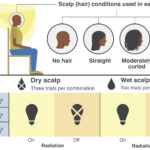2023-06-07 ブラウン大学
◆この新しい研究では、全国各地の研究施設で行われたより広範なデータセットを使用しており、全体的な人口に対してより一般化できる結果が得られました。この研究は、幅広い早期環境要因が子供の健康と発達に与える影響を理解することを目的とした全国的な研究プログラムであるECHOプログラムによって資金提供されました。
<関連情報>
妊娠期のパーフルオロアルキル物質曝露と幼児期のBMI z-Scoreおよび過体重・肥満のリスクとの関連性: ECHOコホートからの結果 Associations of Gestational Perfluoroalkyl Substances Exposure with Early Childhood BMI z-Scores and Risk of Overweight/Obesity: Results from the ECHO Cohorts
Yun Liu,Adaeze C. Wosu,Abby F. Fleisch,Anne L. Dunlop,Anne P. Starling,Assiamira Ferrara,Dana Dabelea,Emily Oken,Jessie P. Buckley,Leda Chatzi,Margaret R. Karagas,Megan E. Romano,Susan Schantz,Thomas G. O’Connor,Tracey J. Woodruff,Yeyi Zhu,Ghassan B. Hamra,Joseph M. Braun
Environmental Health Perspectives Published:7 June 2023
DOI:https://doi.org/10.1289/EHP11545

Abstract
Background:Gestational per- and polyfluoroalkyl substances (PFAS) exposure may be associated with adiposity and increased risk of obesity among children and adolescents. However, results from epidemiological studies evaluating these associations are inconsistent.
Objectives:We estimated the associations of pregnancy PFAS concentrations with child body mass index (BMI) z-scores and risk of overweight/obesity in eight U.S. cohorts.
Methods:We used data from 1,391 mother–child pairs who enrolled in eight Environmental influences on Child Health Outcomes (ECHO) cohorts (enrolled: 1999–2019). We quantified concentrations of seven PFAS in maternal plasma or serum in pregnancy. We measured child weight and height between the ages of 2 and 5 y and calculated age- and sex-specific BMI z-scores; 19.6% children had more than one BMI measurement. We estimated covariate-adjusted associations of individual PFAS and their mixture with child BMI z-scores and risk of overweight/obesity using linear mixed models, modified Poisson regression models, and Bayesian approaches for mixtures. We explored whether child sex modified these associations.
Results:We observed a pattern of subtle positive associations of PFAS concentrations in pregnancy with BMI z-scores and risk of overweight/obesity. For instance, each doubling in perfluorohexane sulfonic acid concentrations was associated with higher BMI z-scores (lowercase beta equals β=0.07; 95% CI: 0.01, 0.12). Each doubling in perfluroundecanoic acid [relative risk equals 110relative risk relative risk (RR)=1.10; 95% CI: 1.04, 1.16] and N-methyl perfluorooctane sulfonamido acetic acid (relative risk equals 1.06RR=1.06; 95% CI: 1.00, 1.12) was associated with increased risk of overweight/obesity, with some evidence of a monotonic dose–response relation. We observed weaker and more imprecise associations of the PFAS mixture with BMI or risk of overweight/obesity. Associations did not differ by child sex.
Discussion:In eight U.S.-based prospective cohorts, gestational exposure to higher levels of PFAS were associated with slightly higher childhood BMI z-score and risk of overweight or obesity. Future studies should examine associations of gestational exposure to PFAS with adiposity and related cardiometabolic consequences in older children. https://doi.org/10.1289/EHP11545


